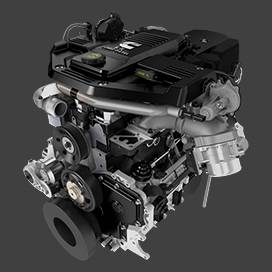Dec . 12, 2024 10:57 Back to list
difference between brake drums and rotors
The Difference Between Brake Drums and Rotors
When it comes to automotive braking systems, understanding the components involved is crucial for both car enthusiasts and everyday drivers. Two of the most critical parts of these systems are brake drums and rotors. While both serve the primary function of slowing down or stopping a vehicle, they do so in fundamentally different ways and are used in different types of vehicles. In this article, we will explore the differences between brake drums and rotors, including their construction, functionality, advantages, and disadvantages.
Construction
Brake drums are typically made from cast iron but can also be found in aluminum or composite materials. They are large, cylindrical components attached to the wheels of a vehicle. Inside each drum is a set of brake shoes that press outward against the inner surface of the drum when the brakes are applied. This configuration gives brake drums their characteristic design.
Rotors, on the other hand, are flat, disc-shaped components that are also made from cast iron, aluminum, or carbon composite materials. They rotate with the wheel and are mounted on the wheel hub. When the brakes are applied, calipers squeeze the brake pads against the rotor's surface to create friction, which slows the vehicle. The design of rotors can vary; slotted or drilled rotors, for example, provide better cooling and performance as compared to traditional solid rotors.
Functionality
The primary function of both brake drums and rotors is to convert the kinetic energy of a moving vehicle into heat energy through friction, thereby slowing it down. However, the mechanism by which this occurs differs.
In a drum brake system, when the brake pedal is depressed, hydraulic pressure forces the brake shoes against the inside of the drum. The resulting friction slows the drum and, subsequently, the vehicle's wheel. This design is often used in older vehicles and some smaller cars because it is generally more compact and can provide adequate stopping power for lighter applications.
difference between brake drums and rotors

Disc brakes, employing rotors, utilize a different approach. When the brake pedal is pressed, hydraulic pressure causes the brake calipers to clamp down on the brake pads, which in turn grip the rotor. This direct application of force allows for quicker stops and more effective heat dissipation. This system is standard in modern vehicles, especially performance cars, due to its superior stopping power and consistent performance, even under high-temperature conditions.
Advantages and Disadvantages
Both systems have their pros and cons.
Brake Drums - Advantages - Typically less expensive to manufacture and install. - More effective in providing parking brake functionality, as the shoes can wedge themselves against the drum. - Generally have a simpler design with fewer parts. - Disadvantages - Prone to overheating and fading under heavy use, which can reduce braking performance. - Heavier than rotor systems. - More challenging to inspect and replace due to their enclosed design.
Brake Rotors - Advantages - Better heat dissipation, which allows for more consistent braking performance, especially during heavy braking. - Quicker response times since the mechanism allows for immediate friction application. - Easier to inspect, as their exposed design allows for a visual check of wear.
- Disadvantages - Generally more expensive than drums, both for parts and service. - Requires more maintenance; if rotors become warped, they need to be replaced or resurfaced. - Can be more complex in terms of installation due to additional parts such as calipers and pads.
Conclusion
In summary, the difference between brake drums and rotors lies in their construction, functionality, advantages, and disadvantages. Brake drums are often seen in older or smaller vehicles and provide a cost-effective solution, while rotors are widely used in modern vehicles due to their superior performance and reliability under various driving conditions. Understanding these differences will help vehicle owners make informed decisions regarding maintenance, repairs, and upgrades, ultimately ensuring safer driving experiences.
-
Scania Brake Drums: OEM Quality for Optimal Safety & Durability
NewsAug.16,2025
-
R.V.I: Advanced Remote Visual Inspection for Precision
NewsAug.15,2025
-
Discover HYUNDA: Innovative Vehicles, Equipment & Solutions
NewsAug.14,2025
-
R.V.I: Unlock Advanced Insights & Real-time Performance
NewsAug.13,2025
-
Kamaz Brake Drum: Durable & Reliable for Heavy Duty Trucks
NewsAug.12,2025
-
Heavy Duty Iveco Brake Drum - Premium Quality & Safety
NewsAug.11,2025
